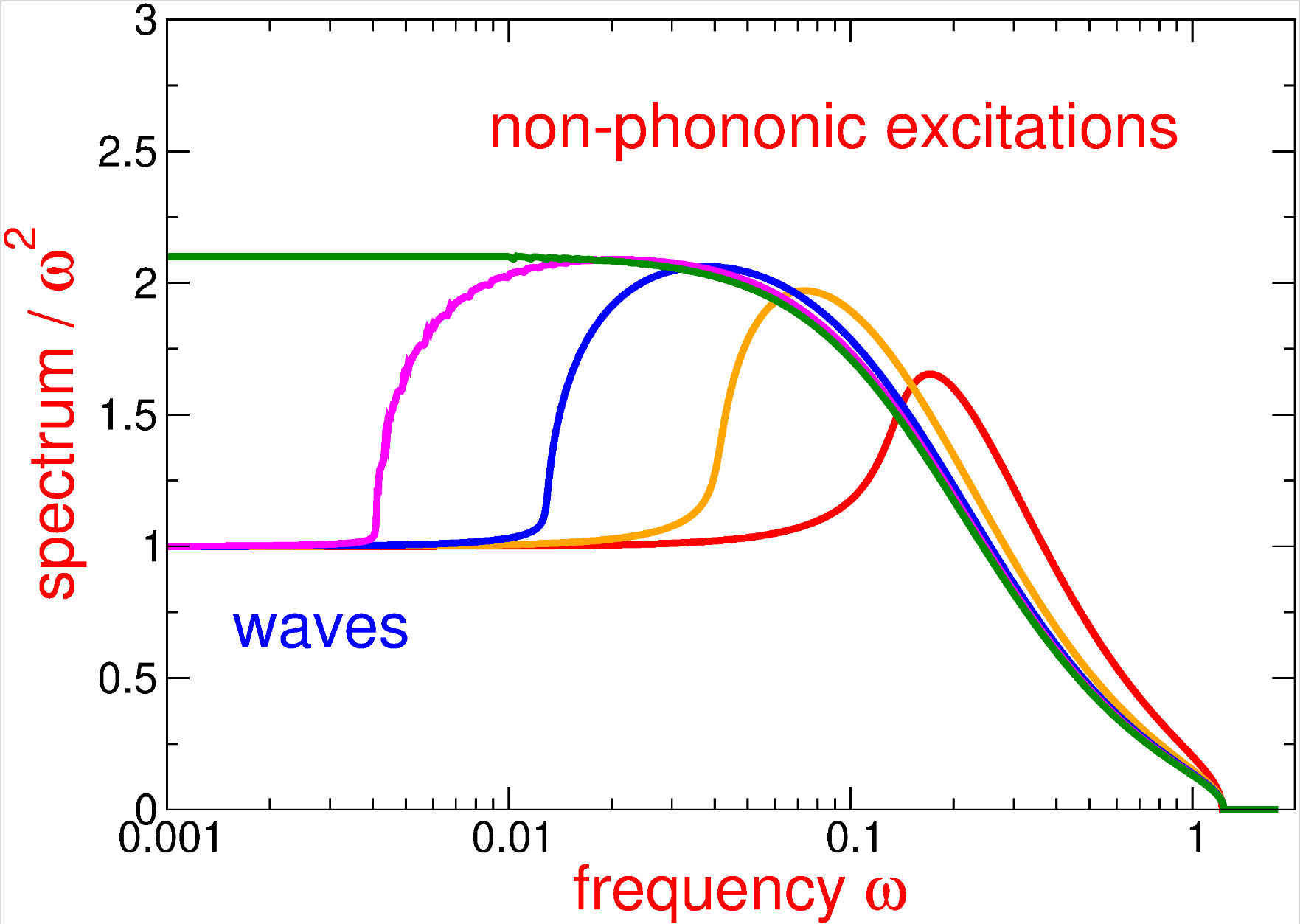
Prof. Dr. Walter Schirmacher im Theoriekolloquium
Prof. Dr. Walter Schirmacher from Universität Mainz, Institut für Physik will talk on Theory of non-phononic vibrational excitations in glasses.
Theory of non-phononic vibrational excitations in glasses
Due to the absence of long-range symmetries the vibrational excitations of glasses differ very much from those of crystals (phonons). Only at low frequencies phonon-like waves exist, because their wavelength is so large that they are not sensitive to the structural disorder. At high frequencies (in the THz range) and/or in small computer-generated samples the vibrational excitations differ very much from phonons. They resemble more the eigenstates of random matrices.
Investigating the continuum limit of the Hessian of a glass, using a novel coarse-graining procedure, we identify two different types of non-phononic vibrational excitations. A first type (Type-I.) arises from spatially fluctuating elastic constants and are responsible for vibrational anomalies, which are observed in glasses in the THz range (“boson peak”) [1]. A second type (Type-II.) becomes distinct in very small samples, in which the low-frequency waves are suppressed. These Type-II excitations are caused by local stresses and exhibit non-irrotational displacement patterns (vortices). We demonstrate that the frequency scaling of the Type-II excitations are non-universal and depend on the details of the underlying interaction potentials. Recent small-sample findings of non-phononic spectra, which scale with the fourth power of the frequency are shown to be an artifact of the smooth potential cutoff used in the simulations.
[1] W. Schirmacher and G. Ruocco, Heterogeneous Elasticity: The tale of
the boson peak, arxiv:2009.05970.
